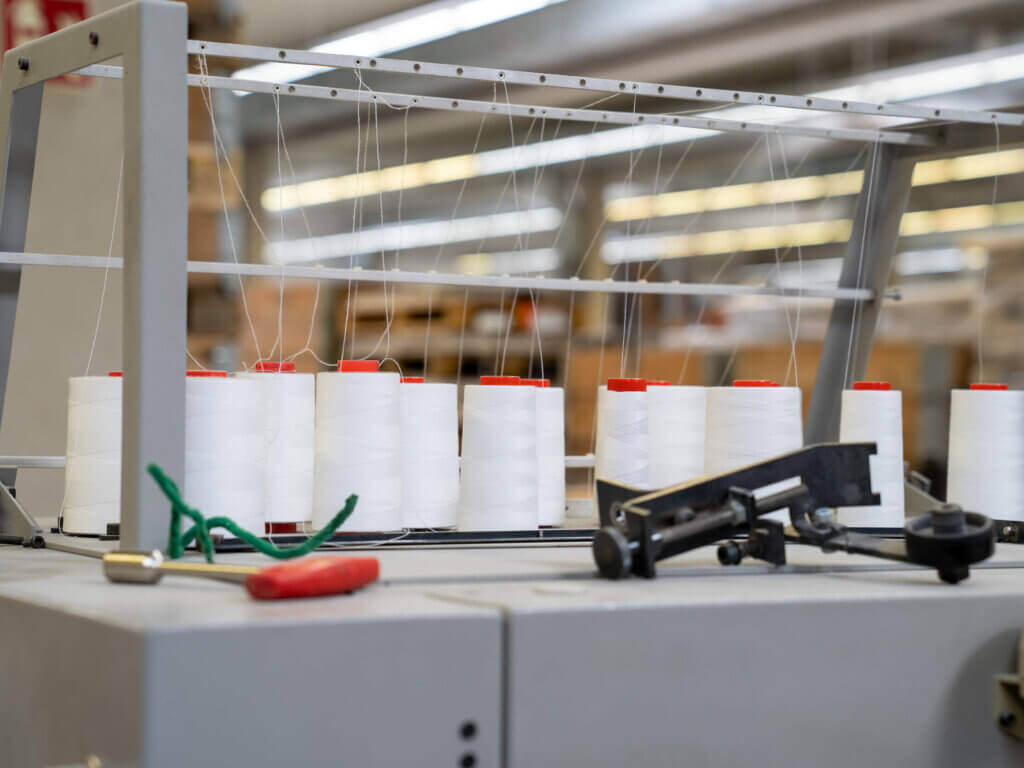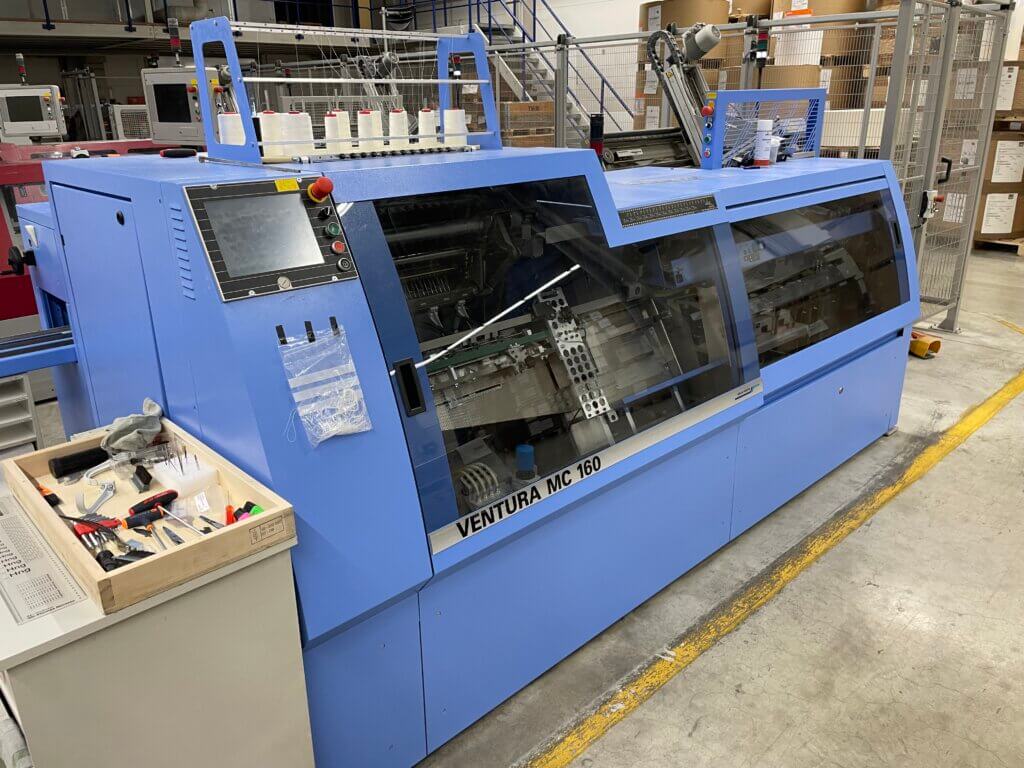Thread sewing is one of the oldest and highest quality methods of binding books. It is characterized by its particular durability and excellent opening properties, making it one of the preferred methods for bookbinding. It is impossible to imagine modern manufacturing companies without it – this process also plays an important role in production at Beltz Grafische Betriebe. We currently thread-sew around 65% of our books. In this article, we would like to introduce you to the process and answer 4 interesting questions about it.
How does thread sewing work?
There are two basic methods of thread sewing. The folded sheets of paper can either be joined together with thread only or additionally glued. The latter ensures an even higher degree of stability.
A distinction is also made between closed and open thread sewing, whereby the thread is visible in the case of open sewing. The threads used are usually either nylon or cotton threads, which can be matched to the color of the book cover. This method is generally used for books with hard covers.
But how is loose paper turned into a thread-stitched end product?
- Printing the sheets: First, the printed sheets are produced in our print shop. The offset printing process is usually used for this, but subsequent thread sewing is also possible with digital printing. With digital printing, however, thread sewing takes place directly after printing from the roll, so that a finished book block is created immediately.
- Folding into signatures: After offset printing, the sheets are folded into so-called signatures. Signatures are large printed sheets of paper that are folded several times as part of this second step. They later form a section of a book.
- Collating the signatures: In the third step, the signatures are collated on the collating machine. This takes place on an assembly line-like production line and represents an important step in book production. Collating prepares for the next processing step, thread sewing. A new ZTM 3692 from the manufacturer Müller Martini has recently been added to our production. You can read all the details here.
- Thread sewing: In the thread sewing machine, the assembled signatures are now stitched together using a needle and thread to create the finished end product.

What makes thread sewing the highest quality form of binding?
The special quality of thread-sewn products is due to the structure and the complex manufacturing process. The sewing of the signatures ensures a particularly stable and durable end product that will give the customer pleasure for a long time, even with long-term use.
Due to its exceptional quality, the binding process is primarily used for high-quality books and books of a special kind, such as cookbooks or encyclopedias. However, this method is also used for other hardcover products.
Together with the aspect of sustainability, thread sewing has thus developed into a method of book production that impresses with high-quality and durable end products.
What are the advantages of thread sewing compared to perfect binding?
With conventional perfect binding, there is no sewing, only gluing of the book pages. It is therefore obvious that thread sewing has a number of advantages over pure gluing. The level of quality is many times higher with thread-sewn books and also in terms of sustainability thread sewing is also better.
The advantages are also clear when it comes to reading comfort : for example, the opening behavior of books that are thread-sewn differs significantly from that observed with perfect bindings. Perfect bindings tend to close on their own as soon as the book lies flat on the table. This phenomenon does not occur with thread-sewn books.
💡 A lthough thread sewing is slightly more expensive to produce, the added value and quality is all the higher.
What does thread sewing look like at Beltz?
Thread sewing is one of the centerpieces of our production and is part of our core business. We generate 50% of our turnover from thread sewing. Accordingly, we attach great importance to high-quality production equipment and modern, high-performance machines.
👉🏻 We currently use four thread sewing machines from Muller Martini. In the recent past, we have modernized our machinery and invested in two new Muller Martini machines of the type Ventura MC 160 invested. This now brings even more flexibility to our production. An exciting article published by our long-standing partner Muller Martini in the spring of this year sheds light on further details.
👉🏻 We currently use an Aster Universe from Meccanotecnica for further processing in digital printing.

Are you interested in thread-sewn products or in getting an idea of our production including thread sewing on site? Would you like to find out more about our company or are you perhaps even interested in an internship, an apprenticeship or a vacancy? Please do not hesitate to contact us. We are always happy to welcome interested parties and visitors. You are also welcome to take a look at our careers page.


